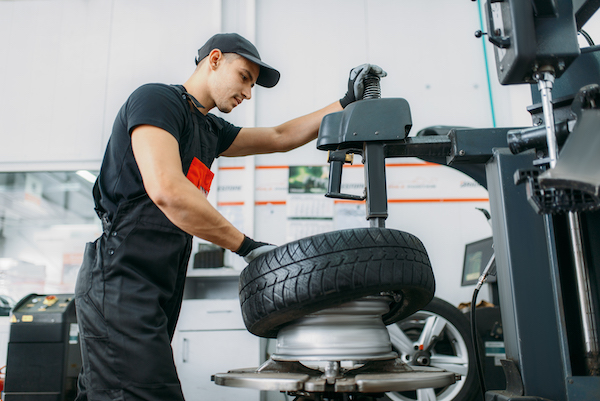Tire Service: Understanding Tire Pressure Surveillance Equipments
Recognizing Tire Stress Monitoring Equipments (TPMS) is a crucial aspect of maintaining ideal automobile performance and security on the road. With advancements in automobile modern technology, TPMS has become a basic attribute in modern-day automobiles, providing real-time info on tire stress levels.

Relevance of TPMS
The relevance of Tire Pressure Monitoring Systems (TPMS) hinges on their ability to improve automobile safety and efficiency with real-time monitoring of tire pressure degrees. Preserving the correct tire stress is essential for guaranteeing optimum handling, stopping, and general safety of a vehicle. TPMS offers vehicle drivers with prompt responses on any kind of underinflated or overinflated tires, enabling timely changes to be made.
Parts of TPMS
Sensors are normally situated in the tire shutoff stem or affixed to the wheel assembly, where they gauge tire stress and transmit information to the control component. Some progressed TPMS designs also present the real tire pressure readings for each tire, supplying chauffeurs with real-time information to make sure optimal tire efficiency and safety. By keeping track of tire stress constantly, TPMS aids avoid accidents, minimizes tire wear, and improves fuel efficiency, making it a vital component for lorry safety and security and efficiency. morris tire and alignment.
Sorts Of TPMS

On the various other hand, indirect TPMS relies upon the automobile's wheel rate sensors to check tire pressure. This system discovers underinflation by comparing the rotational speeds of the wheels. Indirect TPMS is less costly than straight TPMS, as it utilizes existing sensors within the automobile.
While direct TPMS provides extra accurate readings, indirect TPMS is easier in layout and normally needs much less maintenance. Both systems have their advantages and restrictions, and the selection between them usually relies on variables such as cost, vehicle make, and personal preference. Understanding investigate this site the distinctions in between these 2 types of TPMS can assist car proprietors make informed decisions regarding tire upkeep and security.
TPMS Maintenance Tips
Conduct routine checks dig this on the tire Visit Website stress levels and contrast them with the TPMS readings to ensure they are regular. During tire rotation or substitute, make certain that the TPMS components are dealt with meticulously to prevent any potential damage. If the TPMS advising light brightens on the dashboard, resolve the problem immediately by checking the tire pressures and the total system for any faults.
Advantages of Correct Tire Stress
Keeping appropriate tire stress, as emphasized in TPMS Maintenance Tips, is important for reaping the countless benefits linked with ideal tire stress levels. One of the main advantages of maintaining the proper tire pressure is improved gas efficiency. When tires are effectively inflated, there is less rolling resistance, bring about far better fuel economy. Furthermore, proper tire pressure guarantees also tire wear, extending the lifespan of the tires and advertising safer driving conditions. With the ideal tire stress, lorries additionally have better handling and traction, particularly in damaging weather condition problems. This can improve overall driving efficiency and security for the chauffeur and travelers. Moreover, keeping ideal tire stress can add to a smoother and much more comfy ride by lowering resonances and noise triggered by underinflated tires. To conclude, the benefits of appropriate tire stress surpass simply tire longevity; they incorporate enhanced fuel effectiveness, enhanced safety and security, much better vehicle performance, and overall driving comfort.
Conclusion
To conclude, comprehending tire stress monitoring systems (TPMS) is critical for maintaining optimum tire stress and making sure automobile safety. By acknowledging the importance of TPMS, recognizing with its elements, recognizing the various types available, adhering to correct upkeep ideas, and understanding the benefits of maintaining appropriate tire pressure, drivers can boost their driving experience and extend the life expectancy of their tires. Appropriate tire pressure is key to effective and risk-free car operation.

Comments on “Discover the very best Tires Morris IL: Comprehensive Choice Available”